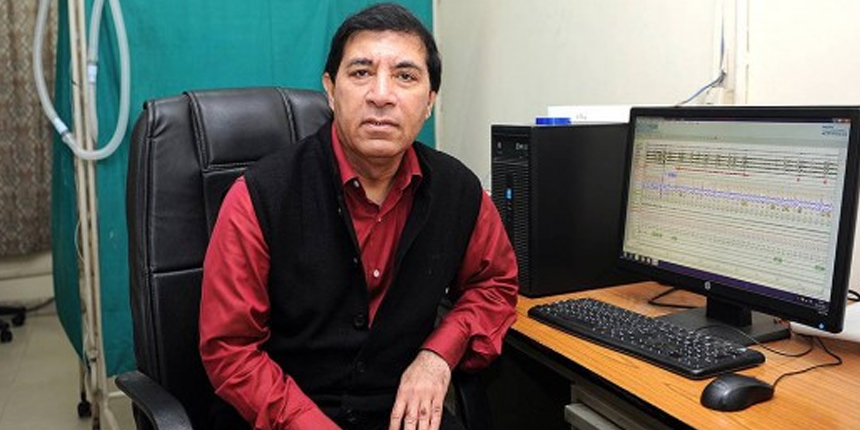Delhi Pollution Can Cause Lung Cancer And Premature Death
Tackling a heavy load of patients Dr. J.C. Suri, a leading pulmonologist, says that high levels of air pollution can also result in underdeveloped lungs in children and even the possibility of lung cancer.
Tackling a heavy load of patients, many of them on nebulizers, Dr. J.C. Suri, a leading pulmonologist and head of the respiratory medicine department at New Delhi’s Safdarjung Hospital, says that high levels of air pollution may cause a rapid deterioration in heart and lung patients, even early death. In an interview with Lola Nayar, Dr. Suri warns that pollution can also result in underdeveloped lungs in children and even the possibility of lung cancer.
What is the long-term impact of air pollution? Can it lead to killer diseases such as lung cancer?
Several studies have been done to evaluate the long-term impact of exposure to various air pollutants. The long-term impact can be chronic respiratory diseases. People with chronic heart diseases or respiratory diseases are more vulnerable and their condition becomes worse. When the pollutant levels are high and the exposure is of a longer duration, then there can be damage to the lungs due to the wide variety of chemicals and particulate matter, which can slowly damage the lungs and cause fibrosis. It can also cause lung cancer, which is associated with smoke and combustion fumes, particularly from automobiles. The various nitrogenous compounds are also associated with the risk of lung cancer. Lung cancer is one extreme, but in the case of those having chronic respiratory diseases, or those who have suffered from angina or heart attacks, undergone stenting, or other heart surgeries, there could be a rapid progression of the disease. This could lead to early or premature deaths.
Are those with asthma and other respiratory issues the most vulnerable? Or can it take a toll on the health of even otherwise healthy individuals?
The most vulnerable are those with chronic respiratory diseases such as asthma, COPD (chronic obstructive pulmonary disease), and those with heart conditions. Senior citizens are also vulnerable as they may be having undetected heart diseases; many have hypertension. Diabetics, pregnant women, and children are vulnerable for a number of reasons. As children are usually outdoors, playing in the parks, they are physically more active than adults and take in much more air per kg body weight, which also means inhaling more pollutants. Children’s lungs are still developing, so they are much more affected by the pollutants. This would have a long-term impact as their lungs may not develop to their full potential. Around 10 percent of children may be asthmatic and their problem may become much worse. Even among healthy people, there are many who may be genetically more vulnerable to pollutant effects.
Are issues related to smog and other air pollution events restricted to the winter months or are citizens increasingly at risk throughout the year?
The effects of air pollutants are weather-specific also. When we talk about air pollution, we talk about the air quality index. In the Clean Air Act, four types of pollutants have been identified. The most important is particulate matter. The other thing is the ozone, particularly the ground-level ozone. There are two types of ozone—healthy and unhealthy. The ozone that is 6-20 miles above us protects us from ultraviolet rays, but the ozone at the ground level is produced due to pollution by vehicles or coal combustion, or power plants. When there is plenty of sunlight exposure, it results in the release of ground-level ozone. So, ground-level ozone pollution will be more in the warmer months. On the other hand, particulates, ground-level ozone, carbon monoxide, sulfur dioxide, and nitrogen dioxide—what goes into the air quality index—are found more in winter. The risk of carbon monoxide in particular rises in winter due to incomplete combustion of carbon when coal is burnt as the supply of oxygen is poor. Depending on the conditions, particulates can be there throughout the year.
In particulates, you have two types—the coarse (10 microns) and the fine (2.5 microns). The coarse particulates are caused by crushing and grinding of stones or when vehicles ply on the roads and the road dust become airborne. So if you live near roads with traffic movement, you would be inhaling the coarse dust throughout the year. The fine particulates come from automobile, wood or forest fires, wood or coal fuels in homes, agarbattis, and candles. Many of the sources of pollution are perennial, but due to lack of sun, the levels of pollution can go up further in the winter months. In winter, there is increased risk due to carbon monoxide as it gets attached to our hemoglobin, impacting oxygen supply to vital organs. This makes people vulnerable to heart attacks, angina, and so on.

Read More
How to improve your respiratory health during winter.

